Muros to Ria de Pontevedra N42 26 W8 42

Gryphon II
Chris and Lorraine Marchant
Tue 11 Aug 2009 08:02
|
Muros is a really vibrant
place, especially today as there is a busy market on the quayside selling fruit,
veg, pear shaped and other cheeses, meat and smoked sausages, and
various home produced alcoholic products
.
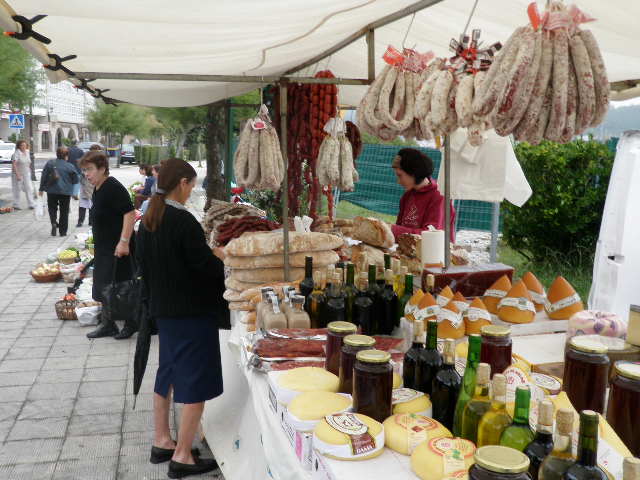 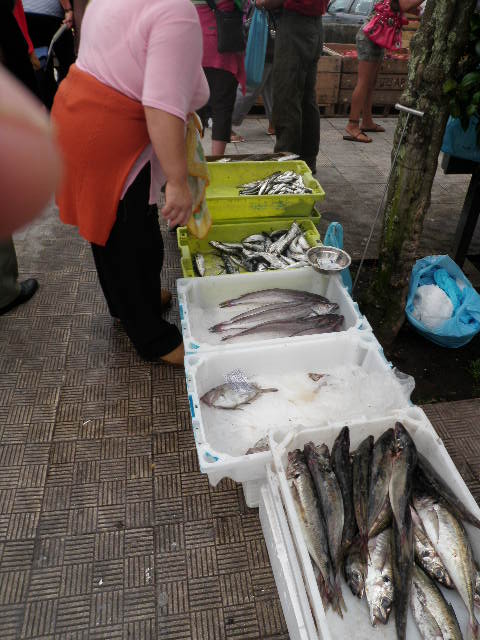 We always find the fish stall one of
the most interesting but today the choice was limited to: Jurel, which we
think is what we call horse mackerel on east coast and is usually thrown back;
sardines, which are on the menu of most restaurants and bars here and are cooked
to be very tasty indeed, they do use lots of salt here though; hake, which is
one of the most commonly eaten fish here along with sardines, it is as common as
cod is in UK. Today they also had John Dory or St. Peter's fish as it is
known in some other countries, the dark spots said to be St P's finger
marks, there ever since he pulled it from the sea of Galilee at Christ's bidding
and found a coin in its mouth which was used to pay off
some tormenting tax collectors. John Dory is quite difficult to
buy at home these days, it is described by the now
deceased Jane Grigson, famous fish cook and writer, as"one of the most
desirable creatures of the sea, coming up to the sole and turbot for quality".
We discovered all this when we asked a fisherman in El Ferrol what he had caught
and he showed us his three sad faced fish calling them bobos so we
spent some time identifying them in our fish ref. books as John
Dorys. Anyway, to cut a fishy story short, we bought two of these
beauties, they were delicious but no gold coins in the mouth so the tax man will
have to wait!
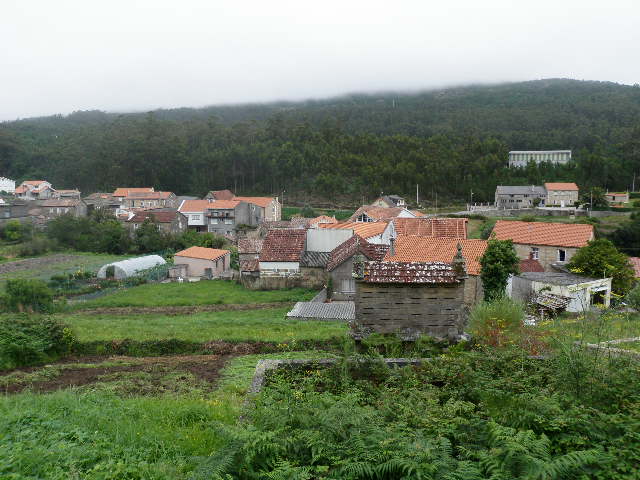
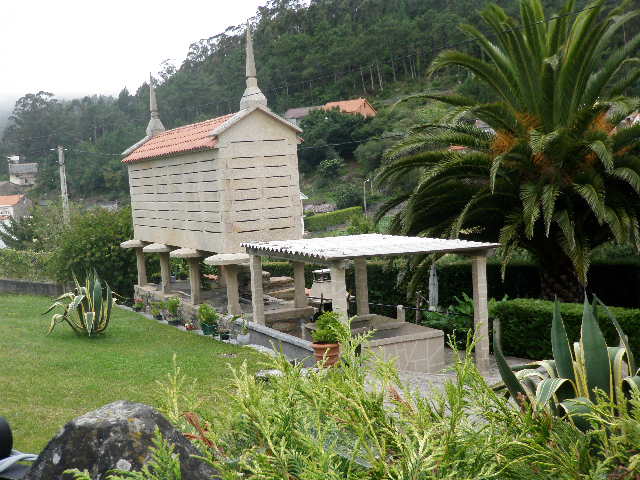 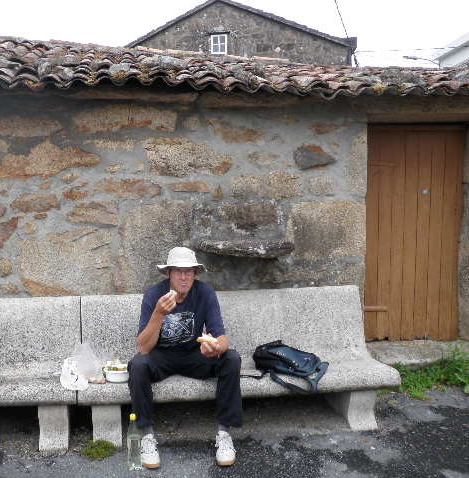 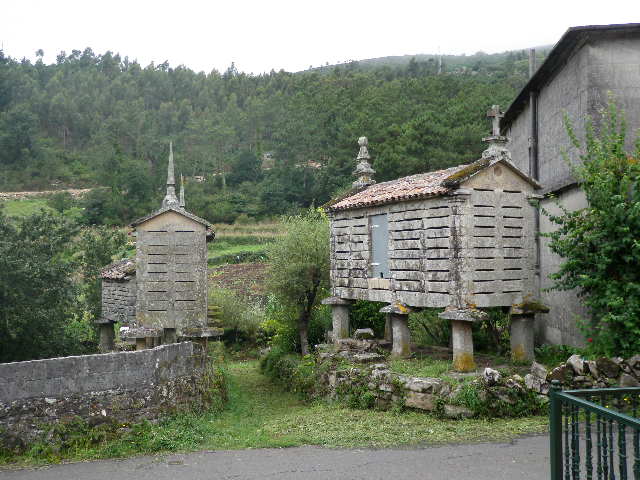 After stowing the market produce we took a picnic
and walked up the hillside along the river bank to see the more agricultural
parts of Muros. It was very different to the busy harbour area with
much rural history in view, the famous old Galician grain stores
which seem to have been something of a status symbol with varieties of
decorative roof adornment, an old watermill now dilapidated, drinking places for
animals and people and tiny fields all along the river bank thick with crops of
sweetcorn, tomatoes, potatoes and all kinds of brassicas. There were very few
gardens without food produce and log stores. Lots of chickens, dogs laying
across paths and plenty of cats, in particular in Galicia we have seen many
chocolate point Siamese, as well as the usual dustbin moggies. What isn't seen
any more is the old beast of burden, the donkey. We haven't seen any other than
those in the towns having fiestas when they are used to give children rides
around the town much like the seaside donkeys we used to have on our
beaches, do we still have them? There is still evidence of the
old houses but like Ireland, large new ones are built behind or alongside
and the old ones become outhouses, the old grain stores have
become wood stores, bicycle sheds or somewhere to keep the
barbecue.
As usual the food in the restaurants and bars is
excellent. We have only once had a set menu, very good but too much food,
instead we go for a variety of tapas or if we are really hungry, raciones
(larger portions of tapas) which give fabulous variety of local specialities
such as razor clams. For the last three days this harbour has been full, not
only of the women scraping for clams, there must be thousands of them, but
of young men in wet suits diving in about 5 metres of water for razor clams. We
first had them in Guernsey but they were not special, here they are sweet and
delicious but still on the chewy side.
We left Muros with the old girls already up
to their thighs scraping for clams, we were intending simply to go
across the ria to a small marina to catch up on washing etc. However, the wind
was so perfect that we decided instead to keep going south. We had a super sail
in gentle northerlies, anchoring off Isla Ons for a cool swim before
entering the Ria de Pontevedra.
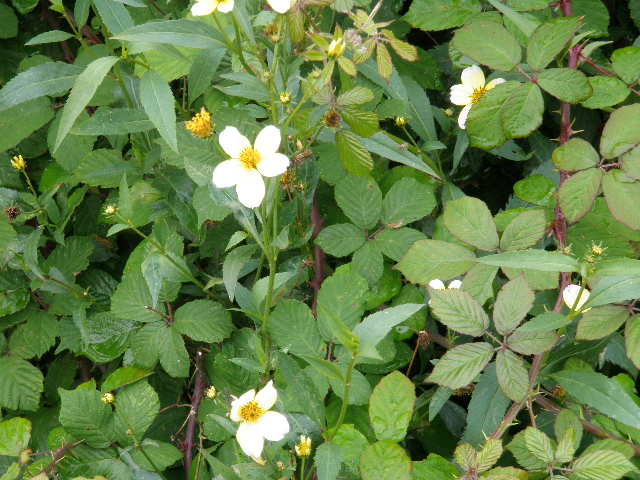 PS Please could someone identify this attractive weed growing next to a
stream? PS Please could someone identify this attractive weed growing next to a
stream? |